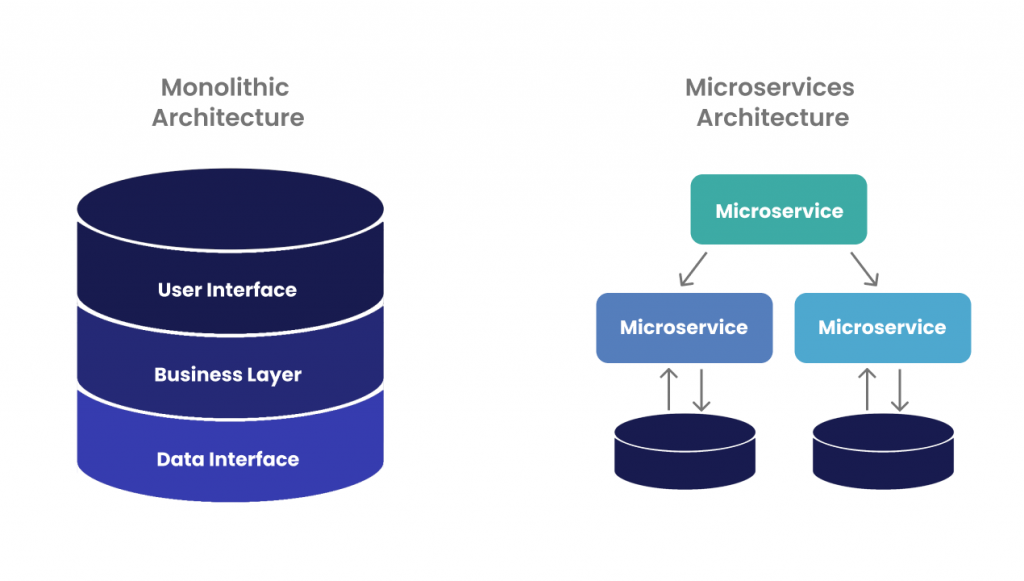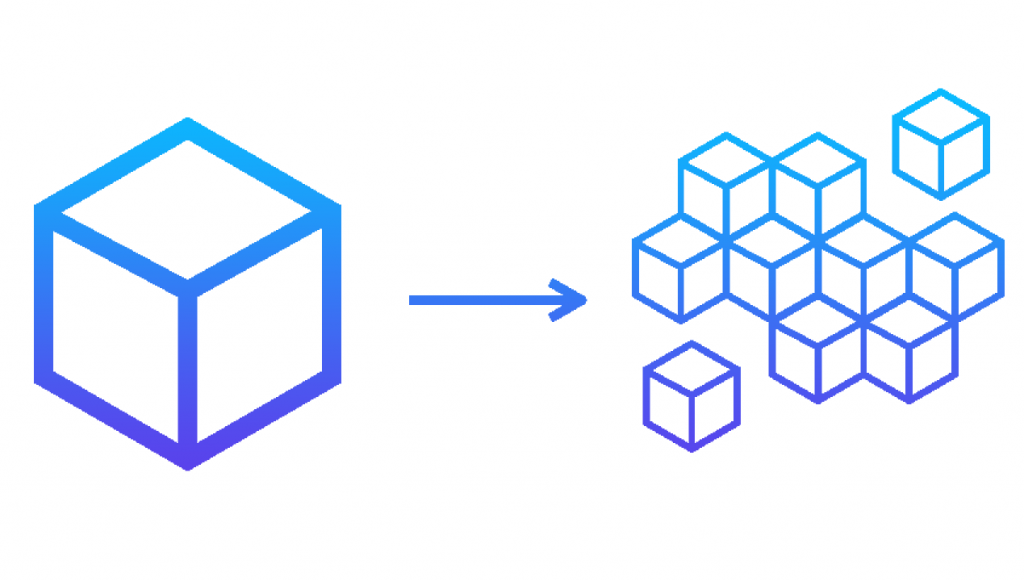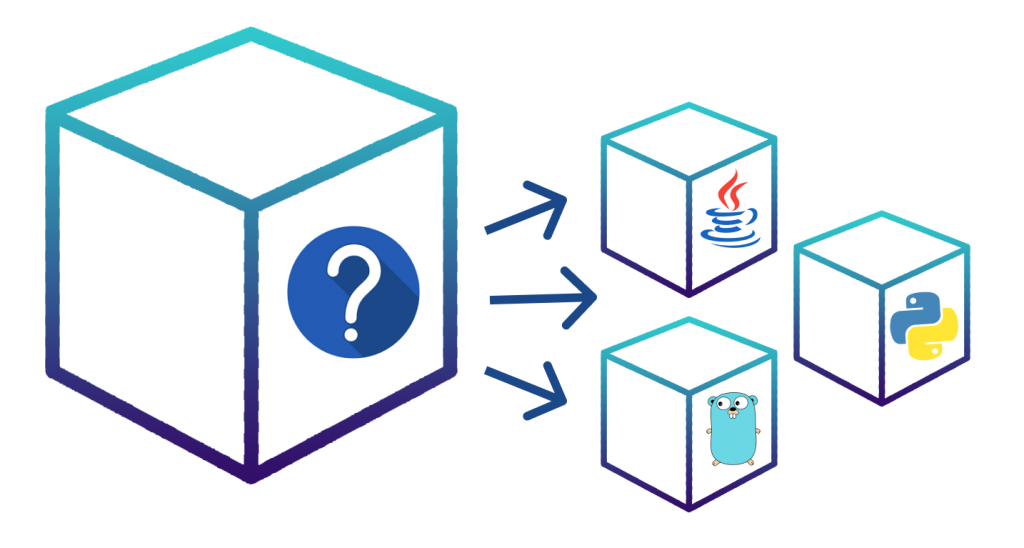
Microservice is not something new and has been in the market for a long time now. However, they gained their popularity only in the recent past. Its reign started when the monolith architecture failed to serve its purpose.
Monolithic and Microservice architecture has their specific purposes. Sometimes the earlier one works better than the later and vice-versa. However, in recent times, Microservice has become a default architectural style for software development.
Keeping the software development market standard in mind, we are presenting a brief guide to Microservice for you.
What is great about Microservices?
This architecture does not have any textbook definition and can be justified as a collection of services. What makes them stand out?
Mentality Shift
Most software development works on a project mentality that is the concerned team is only responsible till the software is built and handed over to the maintenance team.
However, with the Microservice product mentality, the relevant teams are responsible for the software throughout its life cycle.
There are high chances of getting high software quality as concerned people own the process throughout the entire lifecycle.
Polyglot Tech Team
In a small, medium, or large enterprises, software development is done on multiple code language platforms.
For example, specific software functionality is developed in C# and another functionality in Python. Had it been a Monolithic architecture, cross communicating between different platforms could have been extremely difficult. But with microservice, software service would run accordingly and communicate swiftly without language platform, configuration restrictions.
Deployment Time
As we discussed earlier, a development process can involve a variety of configuration properties, platform dependencies, APIs, and many more.
These dependencies can create issues like deployment delays, maintenance issues, to name a few.
With Microservices, deployment issues are sorted as all the service-related configuration & dependencies remain present inside the specific service. That allows everything in the service to be properly deployed in less time.

A detailed glance at Microservice’s benefits:
- It focuses on a single service and works on specific issues with relevant dependencies.
- All the individual small modules are self-serviced. The functionalities of these small modules are independent of each other. However, they leave a chance for easily integration whenever required.
- It is great for the teams who deal with frequent code changes and requires fast time to market.
- It makes code management a lot easier process.
- The small, divided services thus shorten deployment, testing, and updating time without impacting the entire application.
- It is easy to scale with less CPU memory and other computational resources.
- Quick modification based on requirements
- The risk of failure reduces by a large extent due to decentralization
- They are easy to extend, develop and deploy at their own pace without affecting the main system.
- Continuous Delivery becomes more achievable due to strong collaboration techniques.
- You are free to choose data storage types as per your services.
Considerations
It is important to note that microservice architecture might not always be the solution for software development. To decode this, we need to have answers to the following questions:
- Is your team ready to accept frequent changes?
- Are they ok with working on self-serviced software components?
- Are your developers finding it hard to manage a centralized code base?
- Is your team aware of the dependencies between the Microservices?
- Is your team capable of keeping threats and vulnerabilities in check?
Once you have answers to the above questions then you will have a good idea whether this is your cup of tea.
When Should You Use Microservice?

If you notice your developers are putting in a lot of time & effort into coding, that might be a sign to opt for Microservice architecture.
Few more signs are:
- You have software components whose development time is at a different pace.
- Modules need to go into production with their repository.
- Loads are different for most software components.
- Software modules frequently interact with external dependencies.
- You are open to the latest technology stack.
Jumping from Monoliths to Microservices
Legacy IT infrastructure is one of the factors for slowing down your value generation engine. The following tips may help you with transitioning from monolithic to Microservice architecture:
- Training your developers with the basics of Microservices or opting for a solution architect – based on your budget.
- You need to understand the application’s boundaries, constraints, and dependencies.
- Focus on finding the error/bug sources then fix those and then fix the whole system.
Building a Microservice
The possible steps are:
- Have a thorough understanding of existing monolithic architecture, its function, and services.
- Divide the big application into small loosely coupled modules. Each small application should be able to operate within itself to complete a smaller goal. Also, the small applications must interact to form a functional single application.
- Then select relevant microservice architecture management and integration tools to manage multiple services.
Programming Languages for Building Microservices

Every organization has its preferred coding language probably because of the history, investments already made, and/or the availability of the skills to complete its business objectives. Jumping to another programming language for better implementation might be a challenging task and may not always yield the desired results. Hence one should first have a thorough understanding of the languages’ ROI. Transitioning to different programming languages should be a smooth and stepwise process to avoid any overwhelming situation.
This section covers some of the popular programming languages that are used to build Microservices. Some of them are:
Java:
It is still one of the most popular programming languages among the developer community. In addition, Java has excellent programming reusability, libraries, and various frameworks for implementing Microservice architecture.
Some of the popular Java Frameworks are:
- Spring Boot: It is one of the most diverse frameworks that is known for Inversion of Control, Aspect-oriented programming, Dependency Injection, and more. They deliver excellent security and data analysis.
- Jersy: Jersy is an open-source Java framework that supports JAX-RS APIs, routing, and clear documentation.
- Swagger: It helps in the documentation and testing of APIs with a well-defined development portal.
- DropWizard: This framework helps in the implementation of RESTful web services. It has useful in-built Java libraries for task completion and helps with faster application development.
GoLang:
GoLang / Go is known for concurrency and faster productivity. Concurrency is one of the important Microservice requirements and Go does its job smoothly in that context. Some of its popular frameworks are:
- Go Micro: They are used to build Microservices and are an RPC framework that is useful for – message encoding, load balancing, PRC clients.
- Go Kit: They are useful for programming dependencies, declarative composition, domain-driven design and are mostly imported as a binary package.
- Gizmo: They are mostly useful for component configurations, and maybe server implementations.
Python:
Python has a large repository of in-built libraries. To meet the business objectives, one only needs to import and use the libraries without any hassle. It is well known for building APIs following RESTful protocols and is one of the best ways to implement the microservice architecture.
- Django, a Python framework, is known for its fast, excellent prototyping and implementation features, and provides better compatibility with PHP.
There are a lot of programming language options out there. So, our recommendation is to decide based on – project compatibility, training, and technical agility.
Deploying Microservices
The suggested steps for deploying are:
- Select platforms to enable the microservice architecture. For example, connecting it with REST API to implement rules, commands, and routines.
- Create independent loosely coupled software components that can be integrated using communication protocols. That includes protocols like - HTTP, TCP, and so on.
- Try to opt for the decentralized data centre to avoid full dependency on a single server/codebase. Secondly, avoid routing all requests on a single database.
- Decide how codes will be monitored for optimal speed. For example, using SSL for security and REST API for communication.
- Continuously check to fix the bugs and opt for a CI / CD Pipeline to automate the deployment process.
Microservices Pros and Cons
Running through the Pros and Cons of Microservices architecture may help you decide if it is the right choice.
Pros | Cons |
|---|---|
You can easily develop and deploy them independently. | It can become difficult to test. |
A large number of team members can develop it. | Multiple services can cause integration issues. |
It is possible to build multiple services using different languages. | Developers may have to work more on network latency, fault tolerance due to the architecture complexity. |
It is easy to integrate with tools like Jenkins, Hudson. | Microservice architecture leads to effort duplication. |
It is easy to pick up. | Integration and management of whole services can turn out to be complicated. |
Open doors to use the latest technology. | It might take extra effort from the developers to implement communication between the services. |
Code organization as per business requirements. | |
In case of any change in the services, only that service would require redeployment and modification. | |
Fault isolation is easier and does not affect the whole system at once. | |
Scaling and integration with third-party services are easier. | |
You can easily jump from one technology stack to another. |
|
The Future
Microservices is one of the popular architectural patterns that help with the adoption of the DevOps mindset. However, as the landscape expands it becomes difficult for developers to manage. They might have to spend a lot of time in log handling, deployment, integration, testing, and other related activities. So, Microservice architecture can be divided into two parts:
Serverless Architecture:
Serverless architecture is closely related to Microservices however they are different from each other. It is meant for running an application whereas Microservices helps in designing an application. Microservices are mostly active even when they are not required and Serverless are event and request driven. This means Serverless architecture runs when an event triggers or a request to a particular application is made. We can run Microservices on Serverless architecture which would mean limiting them to run only when they are required. It might also help to deal with service latency time, versioning.
Microservices as PaaS:
Microservices as PaaS might be possible due to technologies like Docker, or Containers. These tools can be integrated with frameworks for logging, monitoring, load balancing, versioning, and so on.
It can be noted that since containers are evolving, and cloud technology is ramping up these two combinations might bring wonders in the future.
Conclusion
The suitability of Microservices depends on the project scale. Usually, they are preferable for scaling large projects but then again it depends on the project requirements. It is a nice way to modernize legacy systems. It helps with – cost reductions, enhances collaboration, integrations, data consistencies.
Maintaining and developing microservices might be easier to a few but further complexities arise due to unmanageable modules- because of difficulties in managing networks. These can be solved by selecting a relevant container, docker, DevOps practices, and so on.
The best way to derive Microservices benefits is by properly managing and maintaining them on time. Our team does the same and they would be happy to help you with the Microservices.

